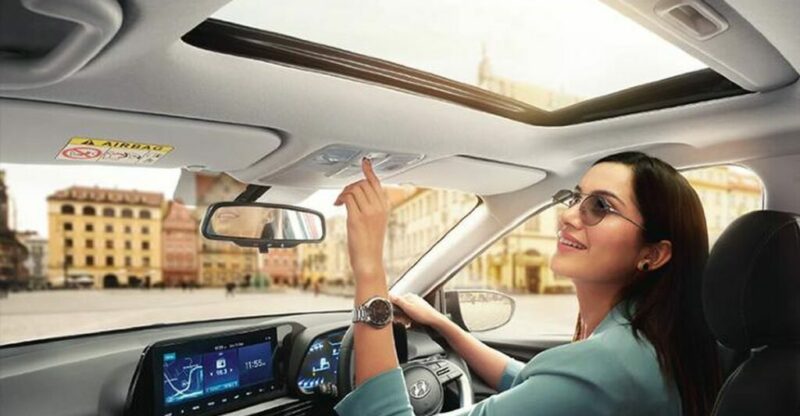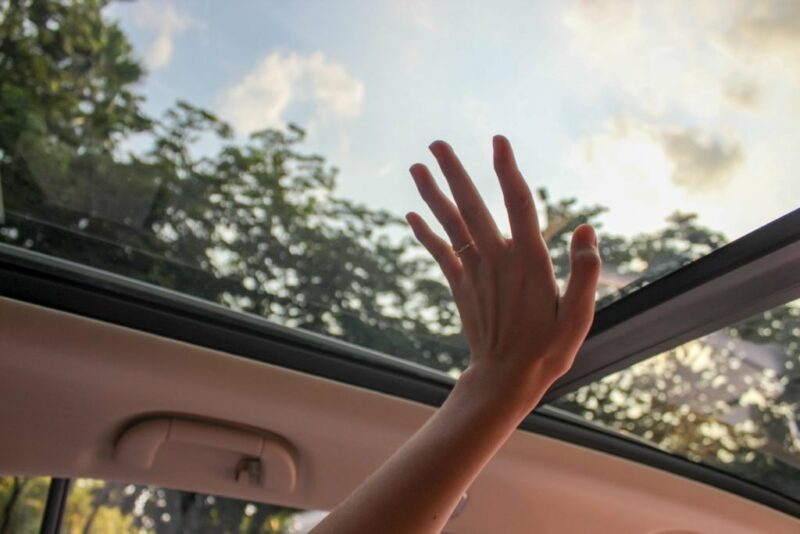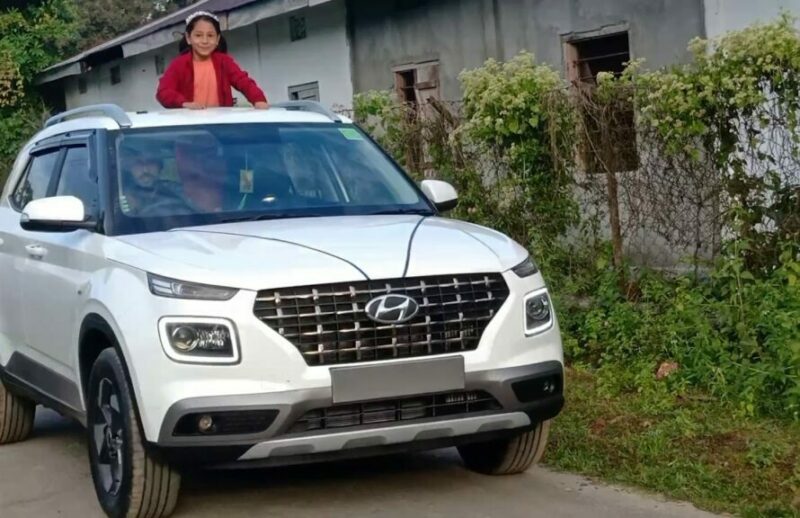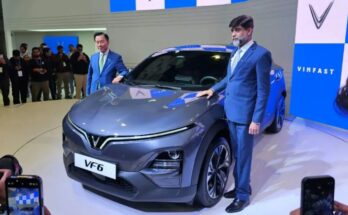The craze for cars with a view is playing a role in breaking down the “class ceiling.” The ‘glass ceiling,’ also commonly called a sunroof, which was long limited to luxury wheels, has captured the eye of mass-market automobile consumers in India who are willing to splurge on aesthetics & value.
India now has a five-fold increase in sunroof penetration, requiring suppliers of these svelte glass panels to invest in new plants to satisfy demand. According to the latest JATO Dynamics report, 1 out of every 4 cars sold in India now has a sunroof.
Related: Sunroof: Advantages and Disadvantages
The question is, what is driving this crazy demand, given that the bulk of the country endures severe weather and that many people might not actually be able to stand up through a sunroof unless they are a politician or “reel-maker”? Industry pundits believe the unusual view that the sunroof offers is what makes it so appealing. It brightens a car’s interior while also elevating the social prestige of its owner.

Sunroof demand has increased significantly as a result of the perceived luxury associated with other technologies like touchscreens and keyless ignition featured in high-end models of mass-market vehicles. According to Ravi Bhatia, President, and Director, Jato Dynamics India:
“Sunroofs may not be opened often but they still have an undeniable appeal. For instance: Cruising down a treelined road in a car with a sunroof can be very enjoyable. Sunroof is often seen as a luxury rather than a practical addition in Indian weather conditions, but it is becoming an increasingly sought-after feature. The status associated with having a sunroof can be a reason why buyers seem to like it, despite the added weight in the worst possible place (a car’s roof).”
This increase is partially attributable to the recent SUV frenzy that has driven auto sales. According to data from JATO Dynamics, about 85% of SUVs (including compact ones) available on the market have a sunroof. Simultaneously, automakers added sunroofs to smaller, sub-Rs 10 lac vehicles to entice buyers who can increase their budgets by roughly Rs 50,000. Furthermore, data shows that the penetration of sunroofs in hatchbacks and MPVs has doubled to about 3. 5% in just 3 years.

Sunroof manufacturers in India are wagering that demand would increase, whether it is due to perceived elegance or practicality. To localize production, they are increasing capacity, building new facilities, and forming partnerships with foreign companies. The German manufacturer Webasto dominates the sunroof business in India. The company built its second India unit in Chennai two months ago after expanding its operations in Pune last year. According to the company, it will invest Rs 1,000 crore to more than double manufacturing capacity to 9. 5 alc units by 2023.
Related: Elon Musk of Tesla Eyes Significant India Investments After Meeting Modi
But Webasto will soon have competition from the Dutch company Inalfa, which in May announced a deal with Gabriel India, part of the Anand Group, to build a 2-lac-unit plant in Chennai. Gabriel sees this as an effort to expand beyond its primary suspension business. Other suppliers in India include CIE Golde and Yachiyo in addition to the two European majors.

The demand for openable panoramic roofs alongside smaller tilt sunroofs with one glass panel and larger panoramic roofs with two panels is especially high in India, where the industry is expanding at an exceedingly quick rate. And with their inclusion in smaller hatchbacks & budget vehicles, the growing demand for sunroofs in India doesn’t seem to be fading away in the near future.

A computer animation professional with over 23 years of industry experience having served in leading organizations, TV channels & production facilities in Pakistan. An avid car enthusiast and petrolhead with an affection to deliver quality content to help shape opinions. Formerly written for PakWheels as well as major publications including Dawn. Founder of CarSpiritPK.com




